Bidding farewell to the old year and welcoming the new, we closed and opened a travel trip to South Korea. The destination of this trip was Incheon, the city where Incheon International Airport is located.

The journey began upon landing at the airport on the chilly morning of December 29, 2016. Traces of snow blanketed the airport grounds, remnants of the previous night's snowfall. Arriving at approximately 9:40 AM local time, we queued for immigration clearance for about 40 minutes. The immigration officer, seemingly in good spirits, offered a slight smile. After clearing customs, we took the subway to our accommodation near Bupyeong. After settling in, we ventured into Seoul for the KBS Music Festival. Returning to our lodgings, we rested, preparing for the adventures ahead. Our first destination: Jeondeungsa Temple (Ganghwa) and Samnangseong Fortress.
The next day, we embarked on our first day of exploring Incheon, venturing out to Ganghwa-do to visit Jeondeungsa Temple. Nestled within the confines of the Samnangseong Fortress, dating back to the Goryeo Dynasty, the temple, originally known as Jinjongsa, is believed to have been constructed during the founding of the Korean nation. [visitkorea.or.kr]
Opening Hours: 07:30-18:30
Entrance Fee: 3000 KRW
Travel: Take bus route 90 (1,950 won) from the bus stop in front of Bupyeong Market Exit 2. The journey takes about an hour to Ganghwa Bus Station. Then, take bus route 70 (1,250 won) for another 30 minutes. The bus will drop you off at the Jeondeungsa Back Gate stop, which is near the temple entrance.
(1.) Wait for bus number 90 at the bus stop in front of Bupyeong Market Exit 2.

(2.) The bus had clear station announcements, but we rode to the end of the line, so we didn't get lost.
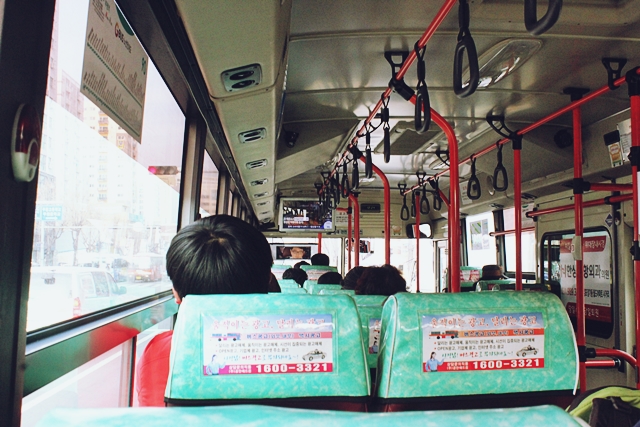
(3.) The train will stop at Ganghwa Station. After getting off the train, you can inquire about travel information or request a map at the Information Desk.

(4.) Take bus number 70 at bus stop number 16 to Jeondeungsa.

Bus Schedule

(5.) The bus departs promptly on time! It takes about half an hour to reach the Jeondeungsa Back Gate bus stop. After getting off the bus, you will see a sign pointing the way to Jeondeungsa. Just follow the signs.

Admission is 3,000 won per person at the entrance. You can walk right in. Before reaching the temple, we will first encounter the back side of the Samnangseong fortress. Once inside, you can still see traces of thin snow on the ground, but the water in some places has begun to freeze. The air is cool. We went to pray for the New Year and took a leisurely stroll. During our visit, the temple was preparing lanterns for the New Year festival, but there were not many people around. The atmosphere was very peaceful. Most of the people who came here were Koreans who drove themselves. There is also a Temple Stay here. Walking around, we also encountered the other side of the Samnangseong fortress. There is a path leading up the mountain along the wall, but we didn't have time to climb it.








Bupyeong
After visiting Jeondeungsa Temple, continue your exploration in the Bupyeong district. This area boasts a wide array of shops selling clothing, cosmetics, and food, as well as numerous nightlife options. With its vibrant atmosphere, Bupyeong offers a shopping experience reminiscent of Myeongdong or Hongdae.

Bupyeong Culture Street (Bupyeong Cultural Street)
Lined with shops and Korean restaurants, this area offers a variety of dining options. While information suggests independent artists perform here, it was relatively quiet during our visit.
Directions: Bupyeong Market Station Exit 2 or Bupyeong Exit 7

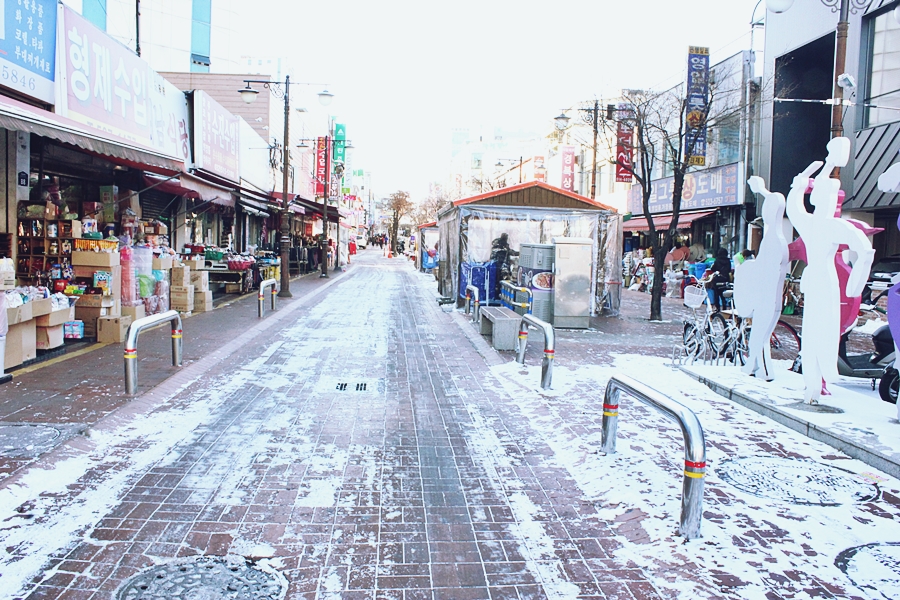



Bupyeong Theme Street (Bupyeong Tema Geori)
This area is a must-visit for nighttime strolls. It is a hub of entertainment and vibrant lights, offering a diverse selection of modern restaurants and shops selling clothing and cosmetics.
Directions: Bupyeong Station, Exit 5.



Bupyeong Underground Shopping Center
A hub for clothing and accessories, this area is popular among young people. A wide variety of affordable fashion items are available, with most priced around 10,000 won. During my visit in the winter season, I observed a vast selection of stylish winter coats.
Travel: Bupyeong Station
Opening hours: 10:00 AM - 10:00 PM.

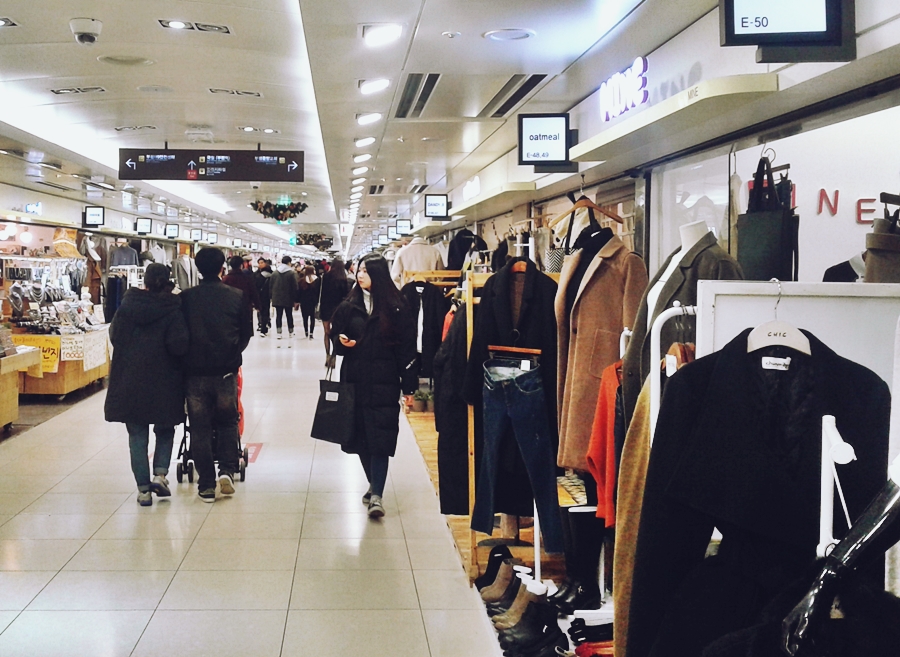

Heungryunsa Temple (Incheon) (흥륜사(인천))
Located near Yeonsu, this temple dates back to the Goryeo Dynasty, approximately 613 years ago. Originally named Cheongnyangsa due to its proximity to Mount Cheongnyangsan, the temple was rebuilt after suffering damage during a war and renamed Heungryunsa. [visitkorea.or.kr]
Directions: Take the subway to Songdo Station. Exit through Exit 1 and walk to the main road. Cross the street to the McDonald's side and take bus number 8 for approximately 15 minutes (13 stops). Get off at the Welfare Hall bus stop.
Take the Subway and get off at Songdo Station, Exit 1.

(2.) Exit onto the main road, cross the street to the McDonald's side, then turn right. Walk a little further and you will find the bus stop sign.

(3.) Take bus number 8 for approximately 15 minutes (13 stops) and get off at the Welfare Hall bus stop. Landmark: This bus stop is located before the bridge connection.

(4.) After getting off the car, cross the road to the opposite side and walk up the wooden stairs to the top.

(5.) Turn left onto the road and continue for approximately 100 meters. Then, turn right at the intersection.

(6.) Walk straight along the road for about 500 meters, and you will reach the temple.





Reaching Heungryunsa Temple: A Scenic Climb with Stunning Views
Reaching Heungryunsa Temple requires a moderate climb up a hill, offering a scenic journey to the mountaintop sanctuary. The temple, known for its New Year's prayers and fortune-telling rituals, attracts a significant number of visitors during this period.
Upon reaching the summit, breathtaking views of the Incheon cityscape and bridge unfold before your eyes. While daytime visits offer panoramic vistas, nighttime ascents present a mesmerizing spectacle of illuminated cityscapes.





Hwadojin Park (Hwadojin Park)
Hwadojin, a fortress constructed in 1878, served as a joint Korean-American military base. Today, numerous houses surround the fortress, while the former base has been transformed into a public park and museum, showcasing the diplomatic ties between Korea and the United States.
Transportation:
Take the subway to Incheon Station. Exit through Exit 1 and cross the street towards Chinatown. Board bus number 28 and ride for approximately 15 minutes (5 stops). Disembark at the Hwadojingong-won (화도진공원. 화도진도서관) bus stop.
(1.) Take the subway and get off at Incheon Station, Exit 1. Then cross the street to the Chinatown side. Once you reach the Chinatown gate arch, turn left and you will find the bus stop.

(2.) Take bus number 28 for approximately 15 minutes (5 stops) and get off at Hwadojingong-won (화도진공원. 화도진도서관) bus stop. After getting off the bus, cross the road to the opposite side to reach the Hwadojin Park entrance.



We arrived quite late, and the atmosphere was very quiet. The information center was already closed, and all the houses were shut. However, we were still able to walk around the grounds and visit the museum. It felt like we were exploring an old Korean village. At the back, there was an exercise park where we saw elderly people enjoying their workout.




Songdo Central Park
Songdo Central Park, a green oasis amidst the bustling new business district, offers a diverse range of recreational activities. From leisurely boat rides and scenic cruises to exploring the park's modern architecture and lush gardens, visitors can find solace and rejuvenation. During an evening stroll, as the sun dipped below the horizon, the park transformed into a captivating spectacle of illuminated landscapes and shimmering waters, creating a unique and enchanting ambiance.
Directions: Central Park Station (Incheon Subway Line 1), Exit 3





Continuing our journey to Chinatown, there are many attractions in this area. This time, we visited Chinatown and the Songwol-dong Fairy Tale Village. Jayu Park, located on the hill behind Chinatown, was visited last year during the cherry blossom season. It was truly a beautiful sight, so I've included it here as well.

Incheon Chinatown
Established in 1883 alongside the opening of Incheon Port, this zone historically housed shops selling goods from China. Today, while predominantly featuring restaurants, it retains a strong Chinese influence, making it an ideal spot for strolling and exploring culinary delights. During my visit on January 1st, the area was bustling with activity, particularly the Jajangmyeon Street. After enjoying some street food, I paid respects at the Euiseondang Shrine and then took a leisurely walk through the Songwol-dong Fairy Tale Village.
Directions: Take the subway and get off at Incheon Station, Exit 1.


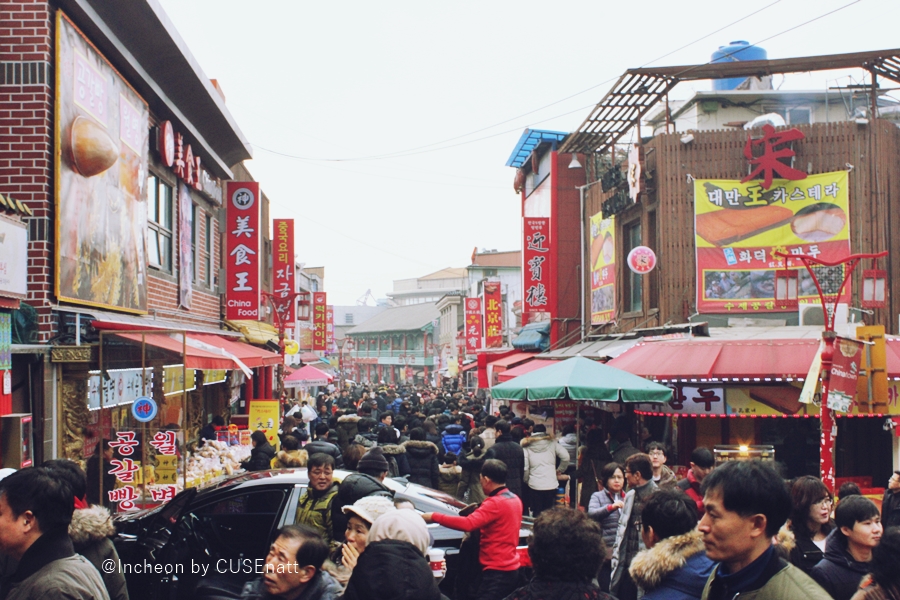


Songwol-dong Fairy Tale Village (Songwol-dong Dong화마을)
Songwol-dong Fairy Tale Village is a small village within walking distance from China Town. The village features whimsical designs and decorations on walls, fences, and walkways, inspired by various fairy tales and cartoons. It's a popular tourist destination for photo opportunities, but be prepared for crowds that might make capturing the perfect shot a challenge.
Directions: Take the subway to Incheon Station, Exit 1. Walk through Chinatown towards Donghwamaeul-gil Street.
Walking from Chinatown, you will encounter a brightly colored archway with a panda hanging upside down to welcome tourists.





Jayu Park (Jayu Park (Incheon))
Jayu Park, also known as Freedom Park, is a public park located on Mount Eungbongsan. Established in 1957 at the end of the Korean War, the park features an activity area where locals can exercise. Students often visit for field trips. The park offers scenic views of the sea and harbor. During spring, the park is adorned with blooming cherry blossoms, creating a breathtaking spectacle.
Directions: Take the subway to Incheon Station, Exit 1. Walk up the stairs to connect to the Chinatown zone.
The path leading up to Jayu Park is adorned with 3D murals. During the cherry blossom season, around April 15th, 2016, the cherry blossoms in Incheon were in full bloom.






Wolmido Island (Wŏlmi-do)
Wolmido Island is conveniently connected to the mainland by a bridge, making it easily accessible by bus from Incheon Station. The island's waterfront promenade offers a variety of attractions, including an amusement park, seafood restaurants, and cafes. It also boasts scenic viewpoints overlooking the sea, harbor, and Incheon city. Visitors can enjoy a leisurely stroll, taking in the sights and the cool breeze. For those feeling weary, a footbath with hot spring water provides a relaxing respite.
Travel: Take the subway to Incheon Station, exit 1. Transfer to bus number 2 from the bus stop in front of Incheon Station and ride for approximately ten minutes (6 stops). Get off at the Wolmido Island (월미도) bus stop.



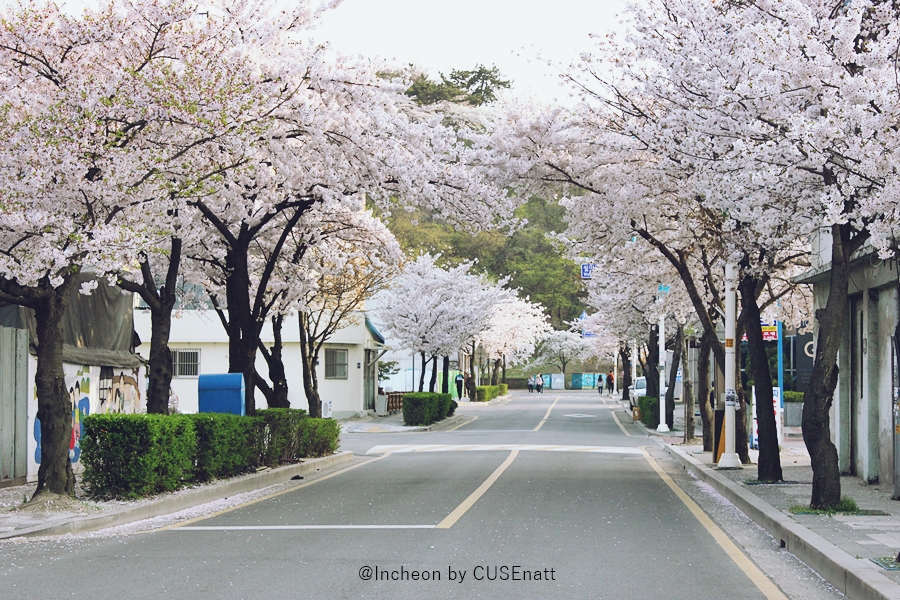




CUSEnatt
Friday, October 4, 2024 3:11 PM

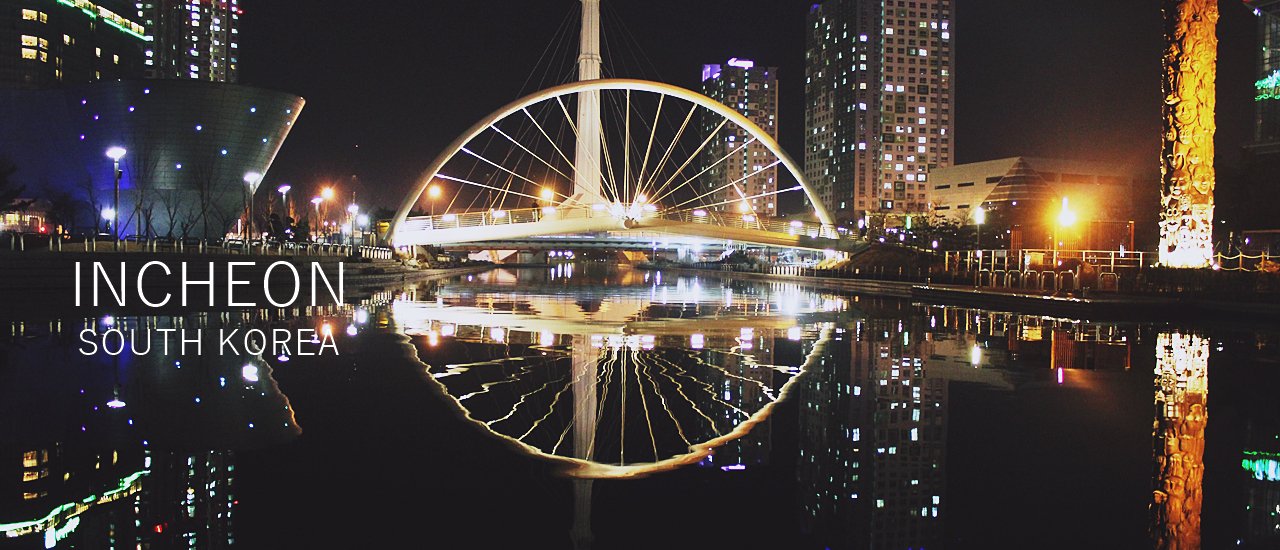



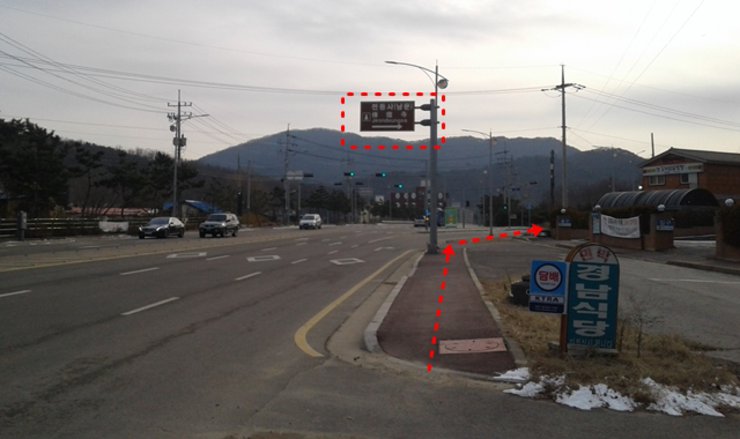

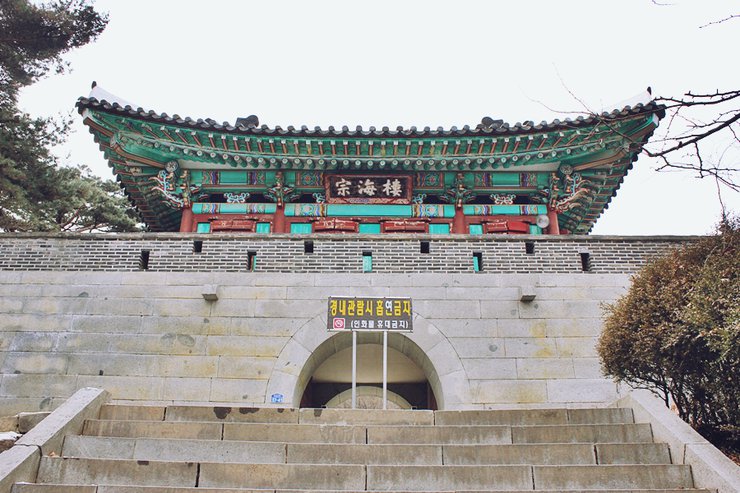




![Cover [2016-04-12^13] Solo Trip to Jeju Island...](https://asset.readme.me/files/50283/thumb.cover.jpg?v=471990f7)


